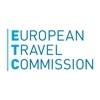

- 85% plunge in international tourist arrivals to Europe, based on data to January 2021
- Accelerated vaccination programmes, coupled with expectations of UK and US markets rebound, provide hope to European destinations
- International travel demand now expected to remain below its pre-pandemic trajectory until 2024
As Europe works to accelerate vaccination programmes over the coming months and control the spread of COVID-19, the expected easing of restrictions provides some hope for travel in summer 2021. Published today, the European Travel Commission’s (ETC) quarterly report ‘European Tourism Trends & Prospects’ outlines that despite vaccine hurdles in recent months, the inoculation programmes are vital in enabling the restart of travel. This cause for optimism is backed-up by the significant amount of pent-up demand which has accumulated following months of travel restrictions, with ETC’s data showing that 56% of Europeans are willing to travel by the end of August.[1]
A resurgence of COVID-19 cases, coupled with prohibitive quarantine and testing requirements dampened traveller sentiment in 2020 and into 2021, with available data indicating an 85% plunge in international tourist arrivals to Europe in January 2021.[2] While vaccination programmes provide a boost, the outlook remains mixed, with the latest forecasts estimating that international arrivals to Europe will remain 46% below 2019 levels in 2021, with a full recovery not expected until 2024.
The EU’s Digital Green Certificate, planned to be introduced before summer, is expected to support the reopening of European travel and tourism in 2021. Envisaged as a tool to facilitate free and safe movements of citizens in the EU and further afield, it is planned to facilitate the exchange of data to prove that a person: has been vaccinated against COVID-19, holds a negative test or has recovered from COVID-19.
Speaking today, Executive Director of ETC, Eduardo Santander, noted “Following a gloomy 12 months, we finally have reasons to be more optimistic about summer 2021. The rollout of vaccination programmes in Europe, although hampered by some hurdles, has proven its effectiveness in stopping COVID-19 infection rates. Meanwhile, the proposed EU Digital Green Certificate opens the door for destinations across Europe to welcome back European and international travellers in the coming season, much earlier than we thought. What’s needed now to revive consumer confidence is clarity of communications regarding the applicable travel rules and the speedy rollout of EU Certificate.”
European Destinations See Major Declines in 2021
European destinations continued to see major declines in tourist arrivals in Q1 2021, with 1 in 2 plummeting over 90% based on latest available data. The largest falls were registered in Austria (-99%), where strict entry rules were in place, and Iceland (-97%), where fully vaccinated visitors are now exempt from testing and quarantine obligations on arrival. A number of Central/Eastern European destinations together with Cyprus, Slovenia and Finland, were amongst the hardest hit, all posting decreases above 93%. Monaco (-41%) was the only destination that did not exceed a 50% decline.
Industry Is Still in Decline, but UK and US Outbound Markets Provide Glimmer of Hope
The last twelve months have been particularly bleak for the aviation industry with European air traffic data for March 2021 showing a 68.9% drop when compared to March 2019. However, when compared to a 70.9% decline in February, this suggests that hope is on the horizon. As for the hospitality industry, occupancy rates in European hotels remain consistently lower than in other major global regions. More prohibitive travel restrictions across the region have meant its recovery has so far lagged that of other key markets including the US and China.
Prospects, however, are brightening for the travel industry with the possibility of revival of the UK and US outbound markets given the faster rate of inoculations against COVID-19 in these countries. The British government’s plans to start lifting travel restrictions after May 17th have already resulted in an upsurge in UK holiday bookings, mainly to Southern European destinations such as Spain, Greece, Portugal, Cyprus, and Turkey. Further westwards in the US, fully vaccinated citizens are now allowed to travel internationally, also providing a sense of optimism for many European countries. While the number of Americans vaccinated against COVID-19 climbs, summer forecasts are trending upwards as the EU considers allowing entry upon proof of vaccination.
Lost Summer Scenario – Domestic Travel Opportunity
Given the general population is as keen as ever to enjoy some much-needed rest and recovery, pent-up travel demand supported by enforced savings will likely mean that many will turn to their domestic travel offering. Last summer resulted in a high degree of domestic substitution due to prohibitive travel guidelines: as a share of total travel within European destinations, domestic travel jumped from 55% in 2019 to 69% in 2020.
While ETC predicts that all sub-regions can expect to see some uplift in domestic tourism this year as well, it is clear that this would be insufficient to offset any corresponding declines in inbound travel. In case of continuous lockdowns and severe restrictions, the impact would be most stark in Southern and Mediterranean Europe, since these destinations tend to be more reliant on international travellers. In comparison, Central and Eastern European destinations can better mobilise domestic demand when foreign travel is taken off the table. However, only a handful of European destinations with the largest domestic markets (such as Romania, Germany, Poland, Finland and Sweden) could feasibly see domestic demand fully offset declines in inbound travel.
The full report and the infographic can be downloaded from ETC’s corporate website under the following link: https://etc-corporate.org/reports/european-tourism-2021-trends-prospects-q1-2021/
[1] Monitoring Sentiment for Domestic and Intra-European Travel (Wave 6)
[2] UN World Tourism Barometer Volume 19, Issue 2, March 2021 (UNWTO)